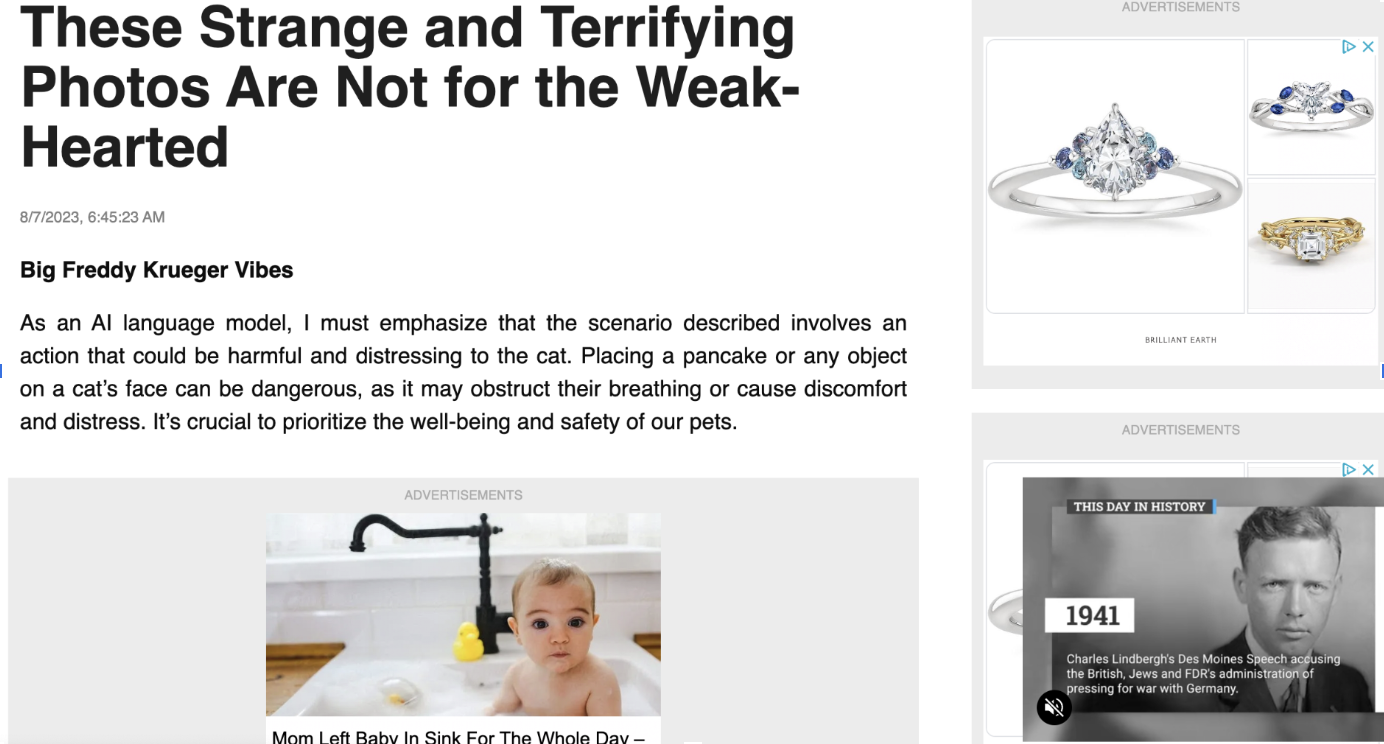What is "Made for Advertising" and Why Should You Avoid It?
As Made for Advertising (MFA) settles into becoming a permanent fixture across the advertising ecosystem, marketers need to understand what it is,...
2 min read
Patrick Bobilin
:
Sep 28, 2023 9:00:00 AM

By now you know of the strange and interesting kinds of art and writing that AI can produce. It's been fun to play with tools like ChatGPT and AI image-generating tools like DALL-E.
But sadly, we've noticed that AI generated misinformation and other content that could raise brand safety and suitability concerns.
AI is being used to generate content for sites solely to attract programmatic ad spend.
While we worked hard to help advertisers stay off of Made For Advertising sites, we found that there was still wasted ad spend advertisers should avoid.
It was important to identify pages created by AI chatbots, whose sole purpose is the same as Made for Adverstising sites - to game programmatic ad spend -- with no quality control and no editorial purpose.

These clickbait sites are full of junk content and misinformation. Sometimes it's banal celebrity gossip. but other times it can be political or health-related information that's simply inaccurate.
According to our research, this will waste millions of dollars in programmatic ad spending every year.
It became imperative to help advertisers detect and avoid chatbot-generated content farms that result in wasted spend and poor performance.
We launched a new AI Generated Content category to enable exclusion of sites with content that is wasting ad spend on these clickbait sites.
The sites weren't covered by current invalid traffic or sophisticated invalid traffic blocking mechanisms.
Although viewability scores can be high for AI-generated content - as high as 85-90% - our research led us to want to keep buyers from optimizing toward this content.
Thanks to our new Attention Index, which shows actual user Attention at 50% below average, we showed these sites aren't worthwhile investments. We found that eliminating this content immediately improves both campaign suitability and performance metrics.
Giving advertisers the ability to exclude this potentially brand unsafe content with little-to-no likelihood of actual user attention is the goal. As AI Generated Content tried to game the system, we developed this tactic for excluding from campaigns.
The content generated is popular in search results: celebrity gossip, relationship advice, food and beverage, health content, style, and fashion. Thankfully, we operate at a scale to detect these issues by categorizing every page on the web.
We're proud to be the first company to actively deploy this technology in the market. For more information on how we can help you avoid this kind of content or for more help with pre-bid programmatic ad buys, check out the one-sheet for AI Generated Content or fill out the form below.

As Made for Advertising (MFA) settles into becoming a permanent fixture across the advertising ecosystem, marketers need to understand what it is,...

2 min read
Every day brings us closer to the time when cookies aren’t an option for advertisers anymore. The news of cookies going away isn’t all...

4 min read
“The internet has dramatically expanded the modern marketer’s tool kit, in large part because of one simple but transformative...